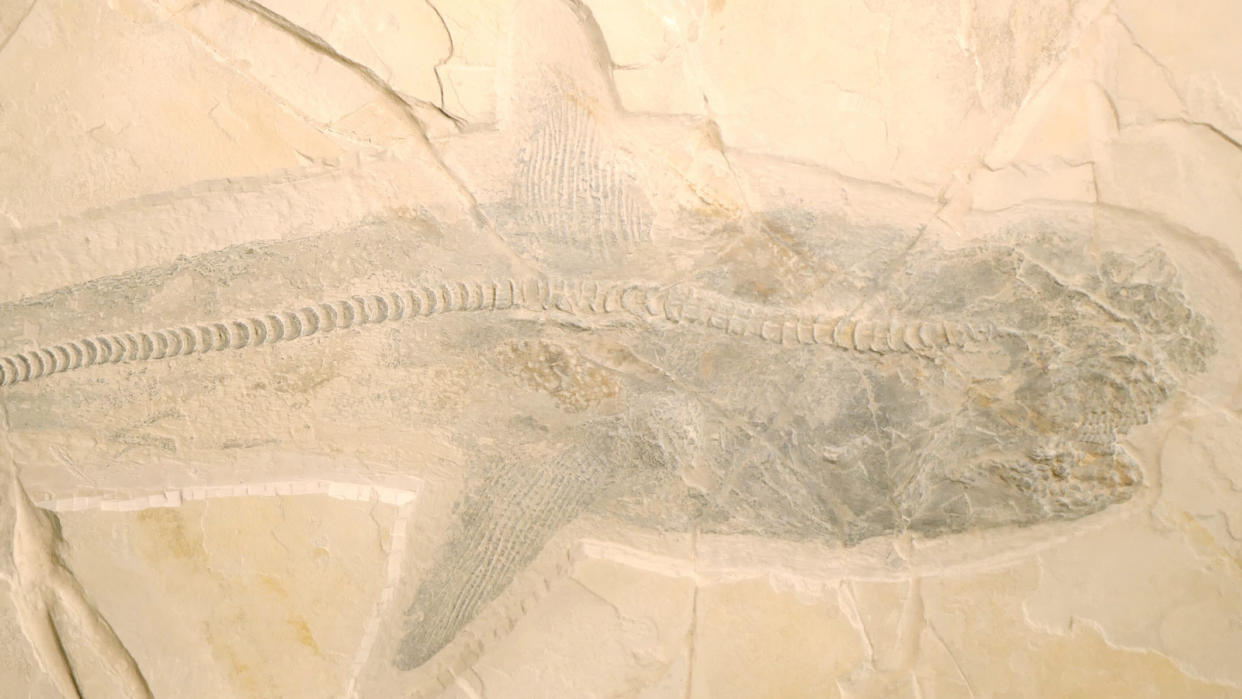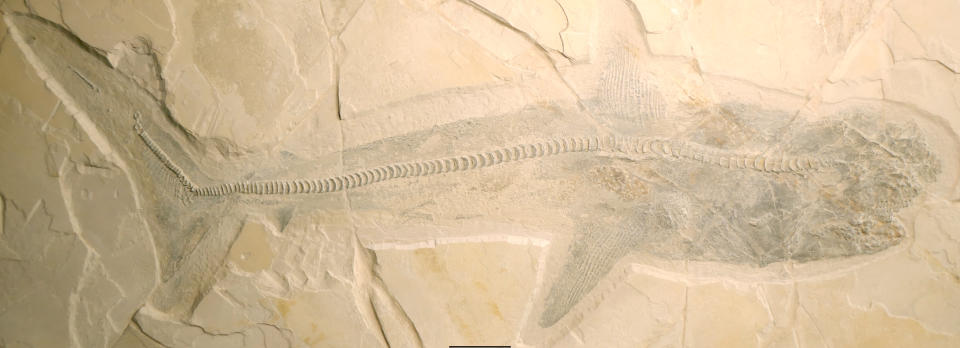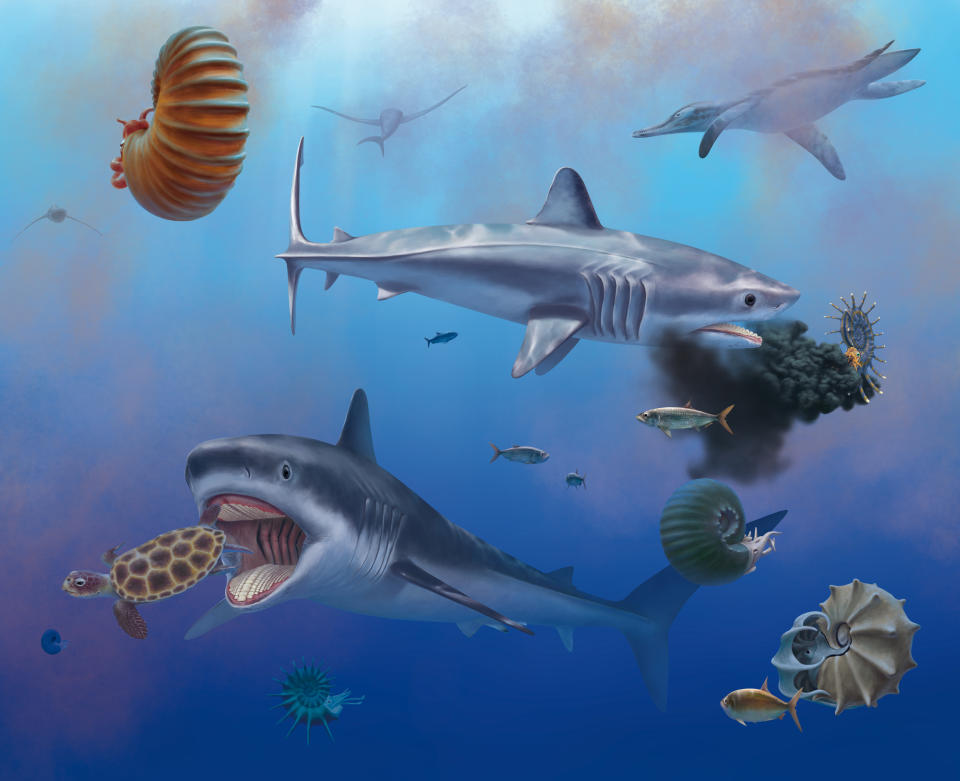Ancient, 30-foot relative of great white shark unearthed in Mexico quarry

Complete fossils from an enormous shark that lived alongside the dinosaurs reveal crucial information about this enigmatic predator — including it being an ancient relative of the great white shark.
The sharks, from the genus Ptychodus, were first discovered in the mid-eighteenth century. Descriptions of this genus were largely based on their teeth — which could be nearly 22 inches (55 centimeters) long and 18 inches (45 cm) wide, and were adapted for crushing shells — found in numerous marine deposits dating to the Cretaceous period (145 million to 66 million years ago).
Without the ability to examine a fully intact specimen, researchers had hotly debated what the shark's body shape might look like — until now.
"The discovery of complete Ptychodus specimens is really exciting because it solves one of the most striking enigmas in vertebrate paleontology," lead author Romain Vullo, a researcher at Géosciences Rennes, told Live Science in an email.
In a study published Wednesday (April 24) in the journal Proceedings of the Royal Society B: Biological Sciences, researchers have described complete fossils of the shark discovered in limestone quarries in Nuevo León, northeastern Mexico. Its outline was still fully preserved, and its body shape suggests it hunted sea turtles — which could explain its extinction around 76 million years ago as it was competing with other animals that ate the same prey.

The specimens "show an exquisite preservation," because they were deposited in a quiet area with no scavengers, Vullo said. "The carcasses of animals were rapidly buried in a soft lime mud before being entirely disarticulated."
Analysis of the fossils reveals this large predator belonged to the mackerel shark group (Lamniformes), which includes great whites (Carcharodon carcharias), mako, and salmon sharks. It grew to around 33 feet (10 meters) long and is known for its massive, grinding teeth, which are unlike those we see in sharks today.

It was widely believed that Ptychodus fed on invertebrates from the seabed — the ancient relatives of clams and mussels. But the new fossils challenge that, revealing that this ancient shark had a streamlined body shape, indicating it was a fast-swimming pelagic predator. "The newly discovered fossils from Mexico indicate that Ptychodus looked like the living porbeagle shark," Vullo said, but with "unique grinding dentition."
RELATED STORIES
—Terror beast fossils unearthed in Greenland are more than half a billion years old
—390 million-year-old fossilized forest is the oldest ever discovered
—Massive graveyard of fossilized shark teeth found deep in the Indian Ocean
This new information has led the researchers to believe it preyed on large ammonites — a type of crustacean with a hard shell — and sea turtles.
"Ptychodus occupied a special ecological niche in Late Cretaceous seas," Vullo said, because it was the only pelagic shark that was adapted to eating hard-shelled prey such as turtles. This may explain why it died out around 10 million years before the extinction event that ended the Cretaceous period. "Toward the end of the Cretaceous, these large sharks were likely in direct competition with some marine reptiles (mosasaurs) targeting the same prey," he said.
Editor's note: The headline of a previous version of this article said Ptychodus was an ancestor of great white sharks. This was corrected to say it was a relative at 6:24 ET on April 24.

